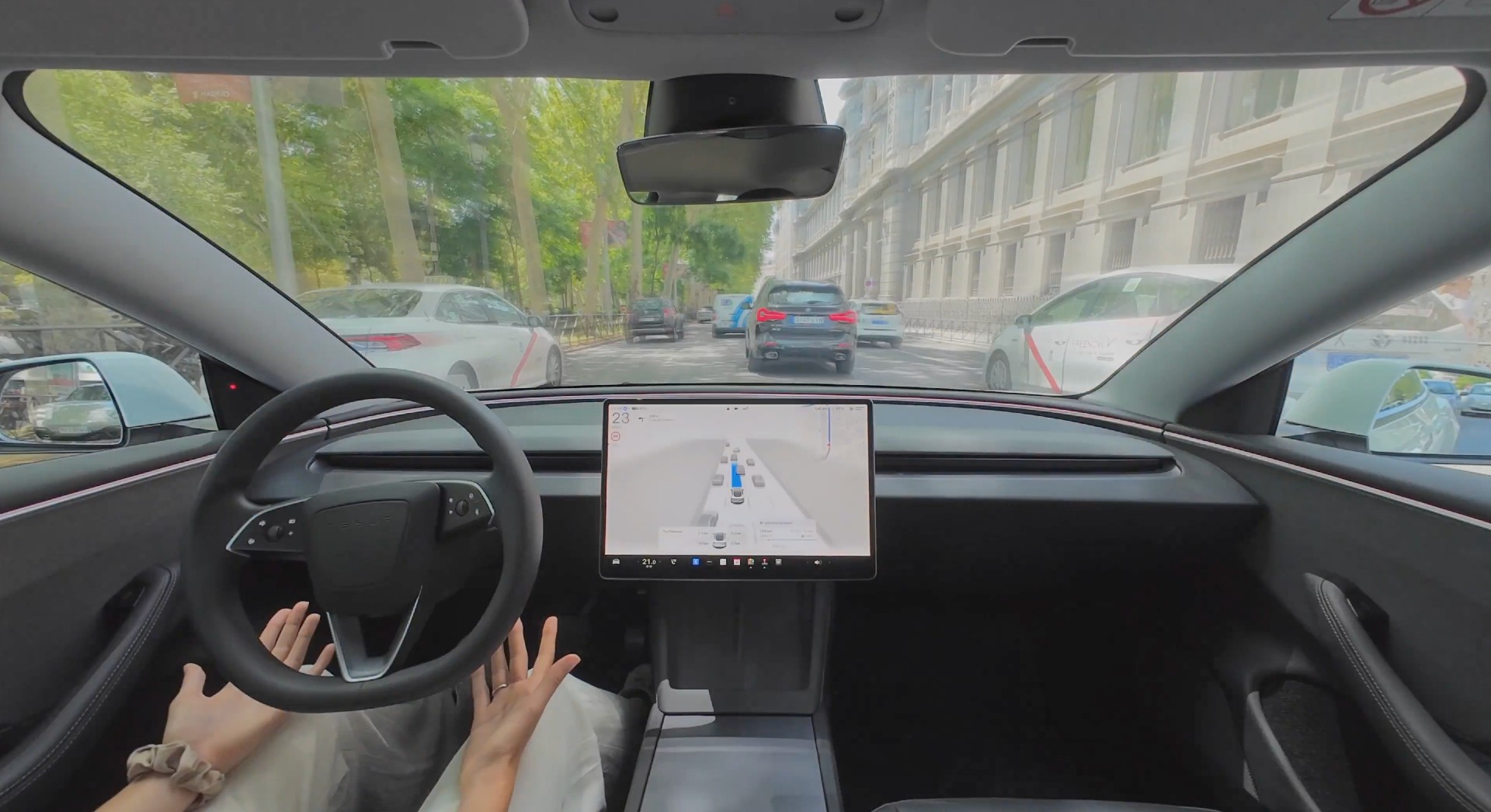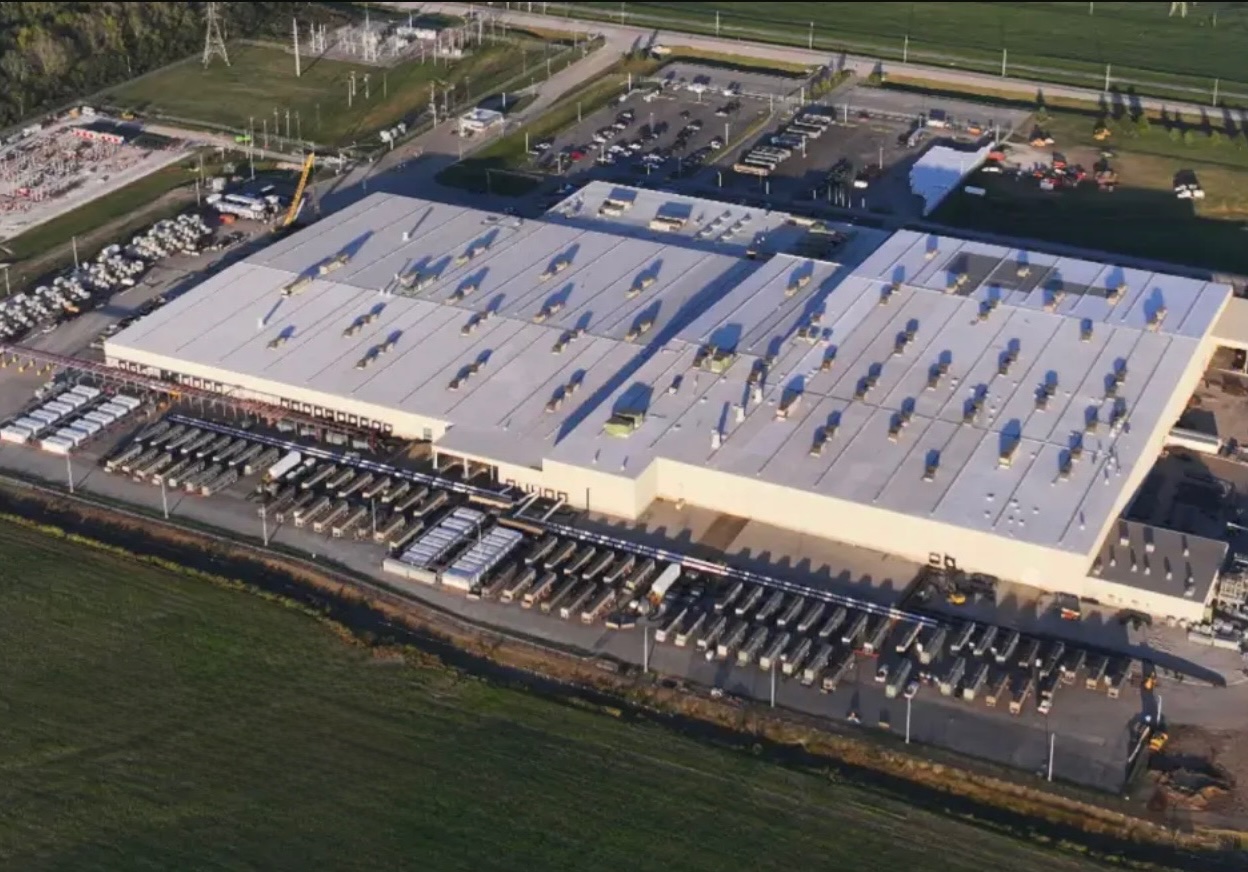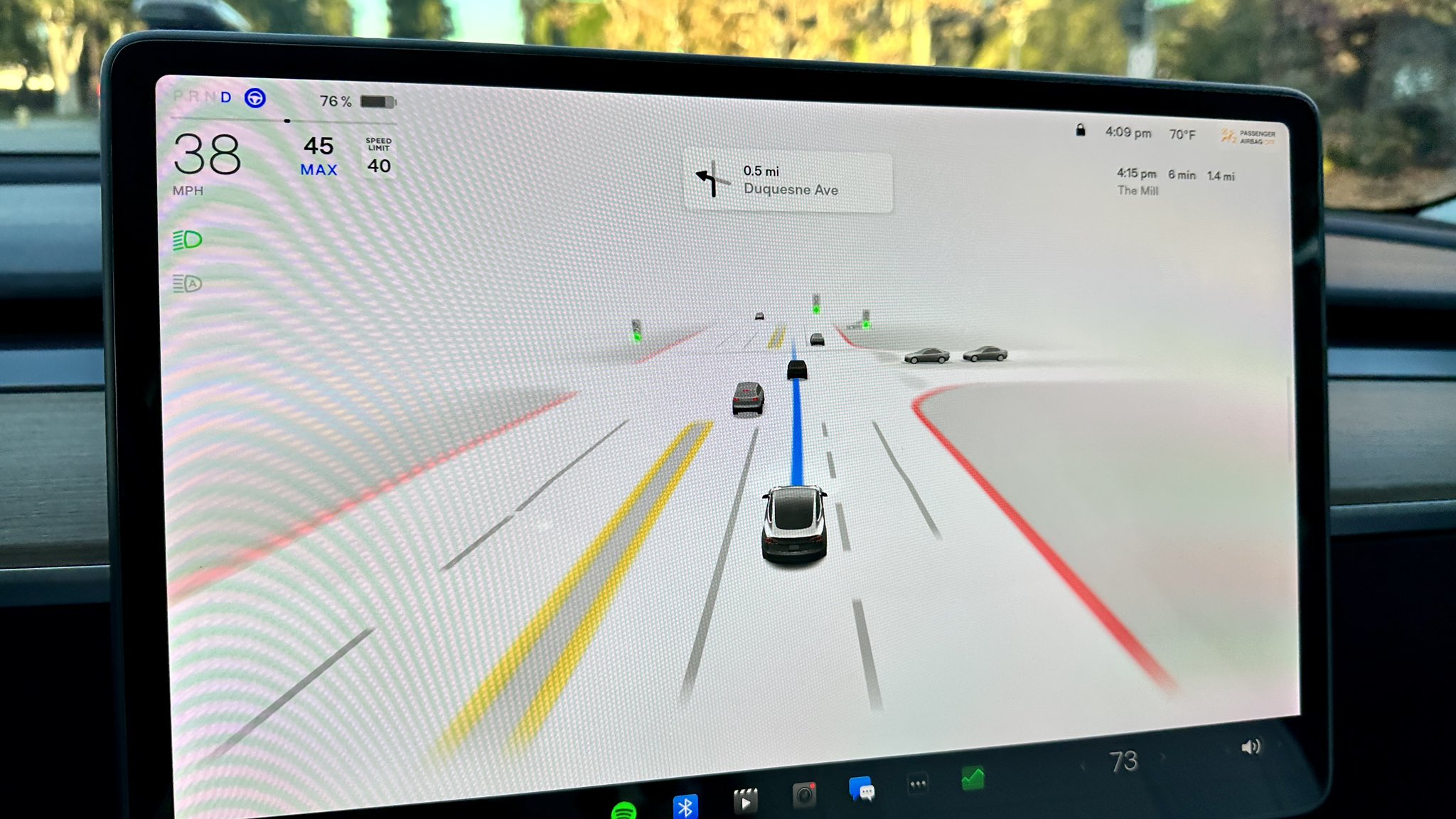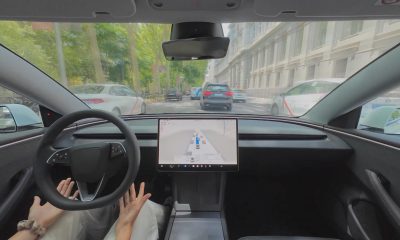Tesla has issued yet another giant update for its Full Self Driving (FSD) software, dramatically improving vehicle behavior in numerous situations.
Despite the controversy that seems to consistently surround Tesla’s autonomous driving suite, it just keeps improving, with new features and capabilities added at an astounding rate. Now, Tesla has issued yet another dramatic update to Full Self Driving, bringing significant improvements in vehicle intelligence and the dream of fully autonomous vehicles one step closer to reality.
@Winnersechelon first reported the newest FSD update on Twitter, posting a screenshot of the release notes for the update.
Release notes for latest FSD Beta release pic.twitter.com/0lDmZbmEUb
— TeslaBull FSD BETA (@Winnersechelon) April 17, 2023
Perhaps more than previous updates, 11.4 focuses on vastly improving vehicle behavior, with new features taking a back seat. According to Tesla’s release notes, those improvements are seen throughout numerous environments.
Foremost, Tesla FSD is better than ever at recognizing and reacting to pedestrians that are either about to cross the street or are already doing so. This stems from an improvement in kinematic calculations, which allows the vehicle to predict where people, vehicles, and objects are going. Regarding pedestrians, the vehicle will act more smoothly, either progressing through the intersection or stopping.
This improvement also extends to other “vulnerable road users,” such as bikers and cyclists, which Tesla FSD will now react more quickly to and slow down for if necessary.
Another improvement that urbanites can enjoy is in “turn performance.” When in dense city areas or unexpected turns, the vehicle will now follow the turn more correctly, dodging parked vehicles and avoiding bus lanes. This improvement is paired with an update to bus lane recognition overall, helping to prevent the vehicle from being where it isn’t supposed to be.
Other updates focus on improving performance in more rural areas. One such improvement is improved lane, line, and edge of road detection, which can be helpful in areas with less consistent road painting and paving. This update feeds into two others, improved lane guidance, ensuring the vehicle is in the correct lane to reach its destination, and improved prediction of the movement of “partial cut-ins,” or cars that haven’t wholly dedicated to a lane. Tesla’s massive library of clips and auto-labeling system makes both upgrades possible.
In the case of improved lane guidance, Tesla states that this update will reduce driver interventions by 64%, ensuring the vehicle isn’t in the wrong lane and reaches the destination more consistently.
Another update affecting how Tesla vehicles behave in lanes is lane change speed control. Tesla FSD will now consider “upcoming navigation deadlines” and will use more or less speed if necessary to switch lanes. Moreover, the vehicle will more accurately calculate the number of lanes it needs to change, thanks to Tesla’s ever-improving vehicle network.
Vehicle speed also improves in countless other situations as well. Thanks to Tesla’s all-new “Vision Speed” network, its network of vehicles can now infer the typical driving speed of any given roadway, improving how the vehicle reacts to areas that typically require lower speeds, such as neighborhoods or parking lots.
The final speed update regards how the vehicle reacts to the weather. The max autopilot speed will now take into account current weather conditions and limit driving speed if visibility or traction is too poor. According to Tesla’s release notes, this calculation is quite advanced, as it will take into account not only its condition, such as tire tread, and its data on visibility and road wetness, but it will also account for outside factors, such as tire spray from other vehicles and traffic intensity.
The final two updates are far more general and will improve the vehicle’s autonomous operation overall. First, Tesla has improved “long-range path blockage,” meaning that its vehicles will more quickly merge into other lanes to avoid obstacles in the road. Second, Tesla has reduced “photon-to-control” latency by 2%, meaning the vehicle will react 2% faster to anything it “sees.”
What do you think of the article? Do you have any comments, questions, or concerns? Shoot me an email at william@teslarati.com. You can also reach me on Twitter @WilliamWritin. If you have news tips, email us at tips@teslarati.com!
Elon Musk
Why Tesla’s Q3 could be one of its biggest quarters in history
Tesla could stand to benefit from the removal of the $7,500 EV tax credit at the end of Q3.

Tesla has gotten off to a slow start in 2025, as the first half of the year has not been one to remember from a delivery perspective.
However, Q3 could end up being one of the best the company has had in history, with the United States potentially being a major contributor to what might reverse a slow start to the year.
Earlier today, the United States’ House of Representatives officially passed President Trump’s “Big Beautiful Bill,” after it made its way through the Senate earlier this week. The bill will head to President Trump, as he looks to sign it before his July 4 deadline.
The Bill will effectively bring closure to the $7,500 EV tax credit, which will end on September 30, 2025. This means, over the next three months in the United States, those who are looking to buy an EV will have their last chance to take advantage of the credit. EVs will then be, for most people, $7,500 more expensive, in essence.
The tax credit is available to any single filer who makes under $150,000 per year, $225,000 a year to a head of household, and $300,000 to couples filing jointly.
Ending the tax credit was expected with the Trump administration, as his policies have leaned significantly toward reliance on fossil fuels, ending what he calls an “EV mandate.” He has used this phrase several times in disagreements with Tesla CEO Elon Musk.
Nevertheless, those who have been on the fence about buying a Tesla, or any EV, for that matter, will have some decisions to make in the next three months. While all companies will stand to benefit from this time crunch, Tesla could be the true winner because of its sheer volume.
If things are done correctly, meaning if Tesla can also offer incentives like 0% APR, special pricing on leasing or financing, or other advantages (like free Red, White, and Blue for a short period of time in celebration of Independence Day), it could see some real volume in sales this quarter.
You can now buy a Tesla in Red, White, and Blue for free until July 14 https://t.co/iAwhaRFOH0
— TESLARATI (@Teslarati) July 3, 2025
Tesla is just a shade under 721,000 deliveries for the year, so it’s on pace for roughly 1.4 million for 2025. This would be a decrease from the 1.8 million cars it delivered in each of the last two years. Traditionally, the second half of the year has produced Tesla’s strongest quarters. Its top three quarters in terms of deliveries are Q4 2024 with 495,570 vehicles, Q4 2023 with 484,507 vehicles, and Q3 2024 with 462,890 vehicles.
Elon Musk
Tesla Full Self-Driving testing continues European expansion: here’s where
Tesla has launched Full Self-Driving testing in a fifth European country ahead of its launch.

Tesla Full Self-Driving is being tested in several countries across Europe as the company prepares to launch its driver assistance suite on the continent.
The company is still working through the regulatory hurdles with the European Union. They are plentiful and difficult to navigate, but Tesla is still making progress as its testing of FSD continues to expand.
Today, it officially began testing in a new country, as more regions open their doors to Tesla. Many owners and potential customers in Europe are awaiting its launch.
On Thursday, Tesla officially confirmed that Full Self-Driving testing is underway in Spain, as the company shared an extensive video of a trip through the streets of Madrid:
Como pez en el agua …
FSD Supervised testing in Madrid, Spain
Pending regulatory approval pic.twitter.com/txTgoWseuA
— Tesla Europe & Middle East (@teslaeurope) July 3, 2025
The launch of Full Self-Driving testing in Spain marks the fifth country in which Tesla has started assessing the suite’s performance in the European market.
Across the past several months, Tesla has been expanding the scope of countries where Full Self-Driving is being tested. It has already made it to Italy, France, the Netherlands, and Germany previously.
Tesla has already filed applications to have Full Self-Driving (Supervised) launched across the European Union, but CEO Elon Musk has indicated that this particular step has been the delay in the official launch of the suite thus far.
In mid-June, Musk revealed the frustrations Tesla has felt during its efforts to launch its Full Self-Driving (Supervised) suite in Europe, stating that the holdup can be attributed to authorities in various countries, as well as the EU as a whole:
Tesla Full Self-Driving’s European launch frustrations revealed by Elon Musk
“Waiting for Dutch authorities and then the EU to approve. Very frustrating and hurts the safety of people in Europe, as driving with advanced Autopilot on results in four times fewer injuries! Please ask your governing authorities to accelerate making Tesla safer in Europe.”
Waiting for Dutch authorities and then the EU to approve.
Very frustrating and hurts the safety of people in Europe, as driving with advanced Autopilot on results in four times fewer injuries!
Please ask your governing authorities to accelerate making Tesla safer in Europe. https://t.co/QIYCXhhaQp
— Elon Musk (@elonmusk) June 11, 2025
Tesla said last year that it planned to launch Full Self-Driving in Europe in 2025.
Elon Musk
xAI’s Memphis data center receives air permit despite community criticism
xAI welcomed the development in a post on its official xAI Memphis account on X.

Elon Musk’s artificial intelligence startup xAI has secured an air permit from Memphis health officials for its data center project, despite critics’ opposition and pending legal action. The Shelby County Health Department approved the permit this week, allowing xAI to operate 15 mobile gas turbines at its facility.
Air permit granted
The air permit comes after months of protests from Memphis residents and environmental justice advocates, who alleged that xAI violated the Clean Air Act by operating gas turbines without prior approval, as per a report from WIRED.
The Southern Environmental Law Center (SELC) and the NAACP has claimed that xAI installed dozens of gas turbines at its new data campus without acquiring the mandatory Prevention of Significant Deterioration (PSD) permit required for large-scale emission sources.
Local officials previously stated the turbines were considered “temporary” and thus not subject to stricter permitting. xAI applied for an air permit in January 2025, and in June, Memphis Mayor Paul Young acknowledged that the company was operating 21 turbines. SELC, however, has claimed that aerial footage shows the number may be as high as 35.
Critics are not giving up
Civil rights groups have stated that they intend to move forward with legal action. “xAI’s decision to install and operate dozens of polluting gas turbines without any permits or public oversight is a clear violation of the Clean Air Act,” said Patrick Anderson, senior attorney at SELC.
“Over the last year, these turbines have pumped out pollution that threatens the health of Memphis families. This notice paves the way for a lawsuit that can hold xAI accountable for its unlawful refusal to get permits for its gas turbines,” he added.
Sharon Wilson, a certified optical gas imaging thermographer, also described the emissions cloud in Memphis as notable. “I expected to see the typical power plant type of pollution that I see. What I saw was way worse than what I expected,” she said.
-

 Elon Musk3 days ago
Elon Musk3 days agoTesla investors will be shocked by Jim Cramer’s latest assessment
-

 News1 week ago
News1 week agoTesla Robotaxi’s biggest challenge seems to be this one thing
-

 News2 weeks ago
News2 weeks agoTexas lawmakers urge Tesla to delay Austin robotaxi launch to September
-

 Elon Musk2 weeks ago
Elon Musk2 weeks agoFirst Look at Tesla’s Robotaxi App: features, design, and more
-

 Elon Musk2 weeks ago
Elon Musk2 weeks agoxAI’s Grok 3 partners with Oracle Cloud for corporate AI innovation
-

 News2 weeks ago
News2 weeks agoSpaceX and Elon Musk share insights on Starship Ship 36’s RUD
-

 News2 weeks ago
News2 weeks agoWatch Tesla’s first driverless public Robotaxi rides in Texas
-

 News2 weeks ago
News2 weeks agoTesla has started rolling out initial round of Robotaxi invites















